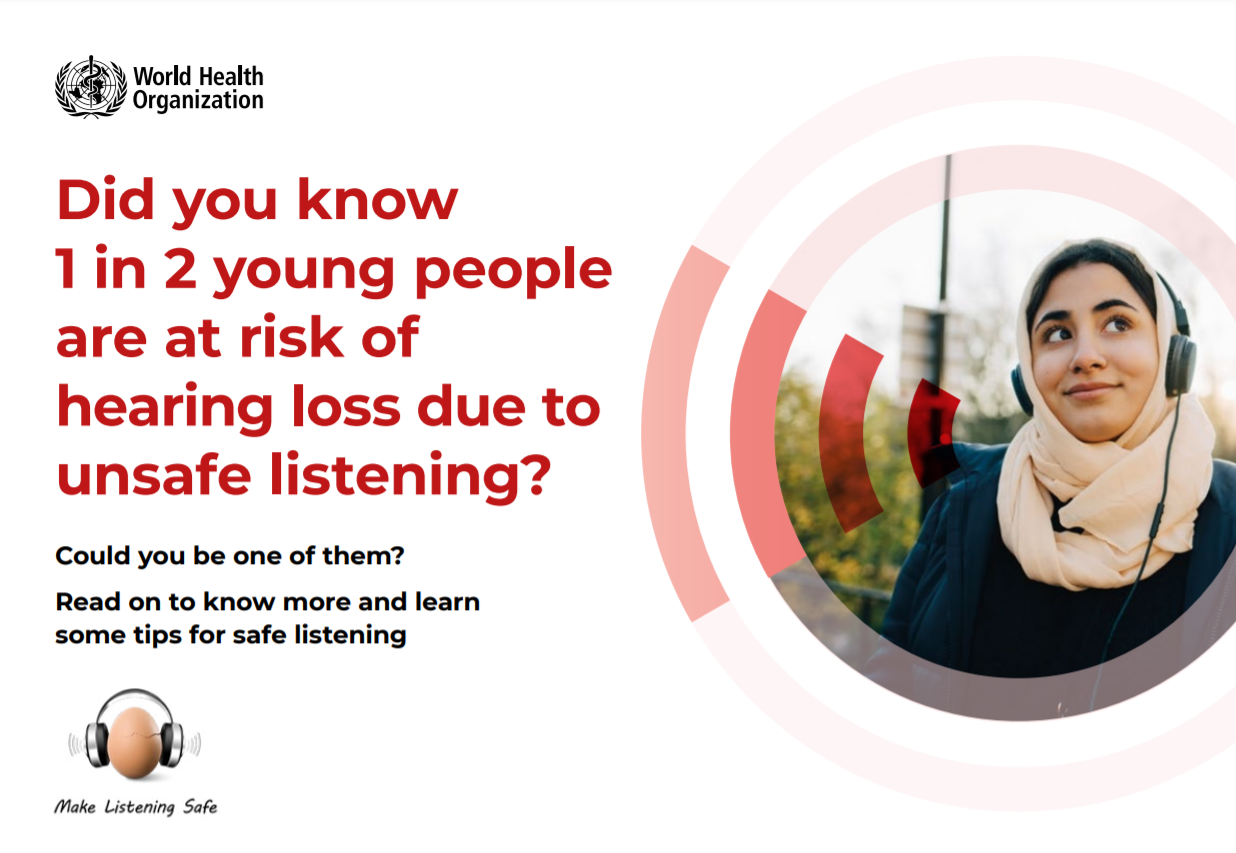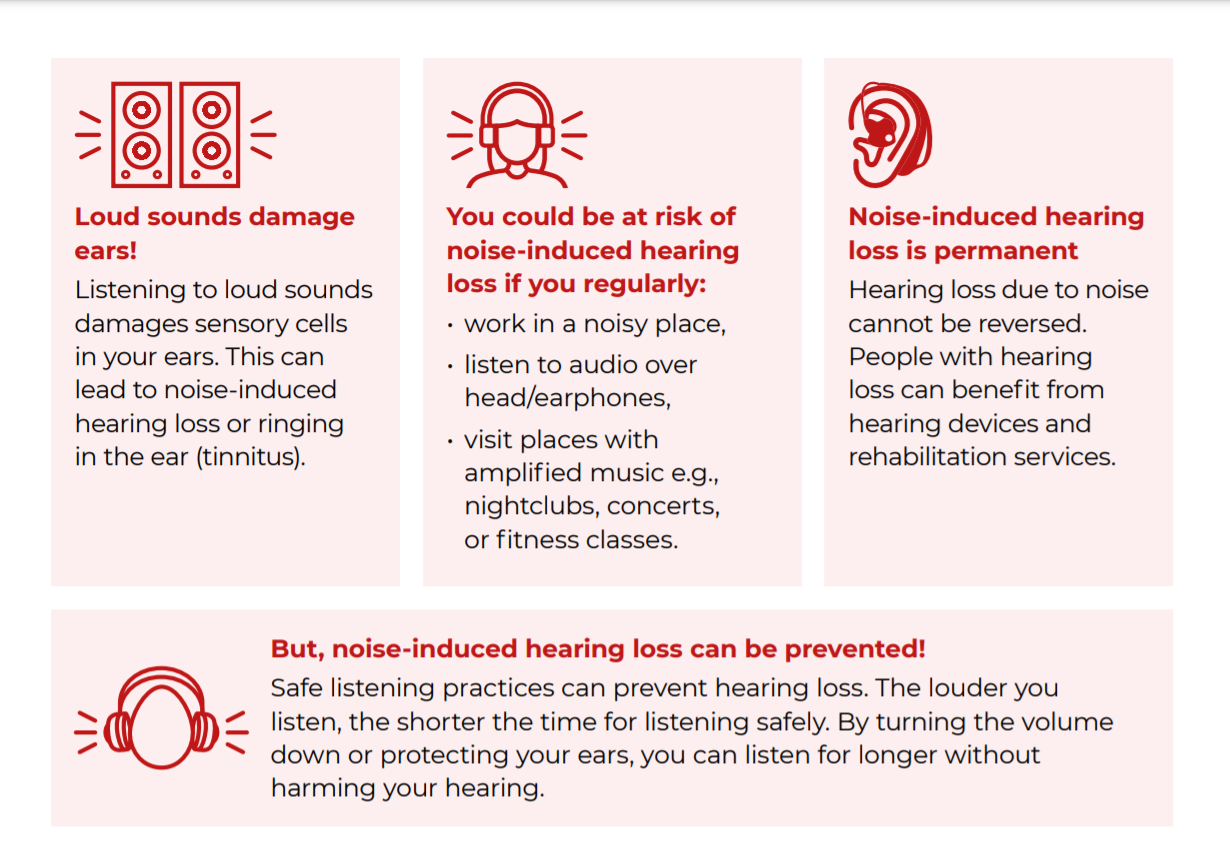March 3 – World Hearing Day
On World Hearing Day 2022, WHO will focus on the importance of safe listening as a means of maintaining good hearing across the life course.
In 2021, WHO launched the World report on hearing that highlighted the increasing number of people living with and at risk of hearing loss. It highlighted noise control as one of the seven key H.E.A.R.I.N.G. interventions and stressed the importance of mitigating exposure to loud sounds.
The World Hearing Day 2022 with the theme “To hear for life, listen with care” will focus on the importance and means of hearing loss prevention through safe listening, with the following key messages:
- It is possible to have good hearing across the life course through ear and hearing care;
- Many common causes of hearing loss can be prevented, including hearing loss caused by exposure to loud sounds;
- ‘Safe listening’ can mitigate the risk of hearing loss associated with recreational sound exposure;
- WHO calls upon governments, industry partners and civil society to raise awareness for and implement evidence-based standards that promote safe listening.
Sensory cells within our ears help us to hear. Exposure to loud sounds over time causes fatigue of these sensory cells. The result is temporary hearing loss or tinnitus. A person enjoying a loud concert, for example, may afterwards experience muffled hearing or a ringing or buzzing in their ears (known as tinnitus). This often improves as the sensory cells recover. However, with regular exposure to loud or prolonged noise, the sensory cells and other structures can become permanently damaged, resulting in irreversible noise-induced hearing loss, tinnitus, or both.
Noise-induced hearing loss can be immediate (such as when exposed to a sudden burst of loud sound); however, more often the loss is gradual, permanent, and frequently goes unnoticed or ignored until the effects become more obvious. Initially, you may only have trouble hearing some high-pitched sounds like bells or birdsong. As it progresses, NIHL can make it difficult to communicate with others, especially in loud places like restaurants and markets.
The term safe listening simply refers to specific listening behaviors that do not put your hearing at risk. The volume of sounds, the duration of listening, and frequency of exposure to loud sounds all have an impact on hearing. The higher the level of sound and longer the duration, the greater the risk of hearing loss. For example, you can safely listen to a sound level of 80dB for up to 40 hours a week. If the sound level is 90dB, the safe listening time reduces to 12.5 hours per week.
To protect your hearing:
- Keep the volume down. This can be done by setting your device’s volume level to no more than 60% of maximum. If you are using an app to monitor your sound level, it is best to stay below 80dB average;
- In noisy places, use ear protectors such as earplugs;
- Always stay away from sources of sound, such as loudspeakers, noisy machinery etc;
- Limit time spent engaged in noisy activities. Give your ears a break frequently from loud sounds. This helps the sensory cells inside the ears to recover;
- Heed the warning signs of hearing loss. Contact a professional if you have persistent ringing in the ear (tinnitus) or have difficulties hearing high-pitched sounds or following conversations


(WHO, 2022)
Useful links:
https://www.who.int/campaigns/world-hearing-day/2022
https://www.who.int/news-room/events/detail/2022/03/03/default-calendar/world-hearing-day-2022-to-hear-for-life-listen-with-care
https://www.who.int/news-room/questions-and-answers/item/deafness-and-hearing-loss-safe-listening
https://worldhearingday.org/event-summary-mapped-by-regions/
https://www.who.int/publications/m/item/media-brief-on-safelistening




